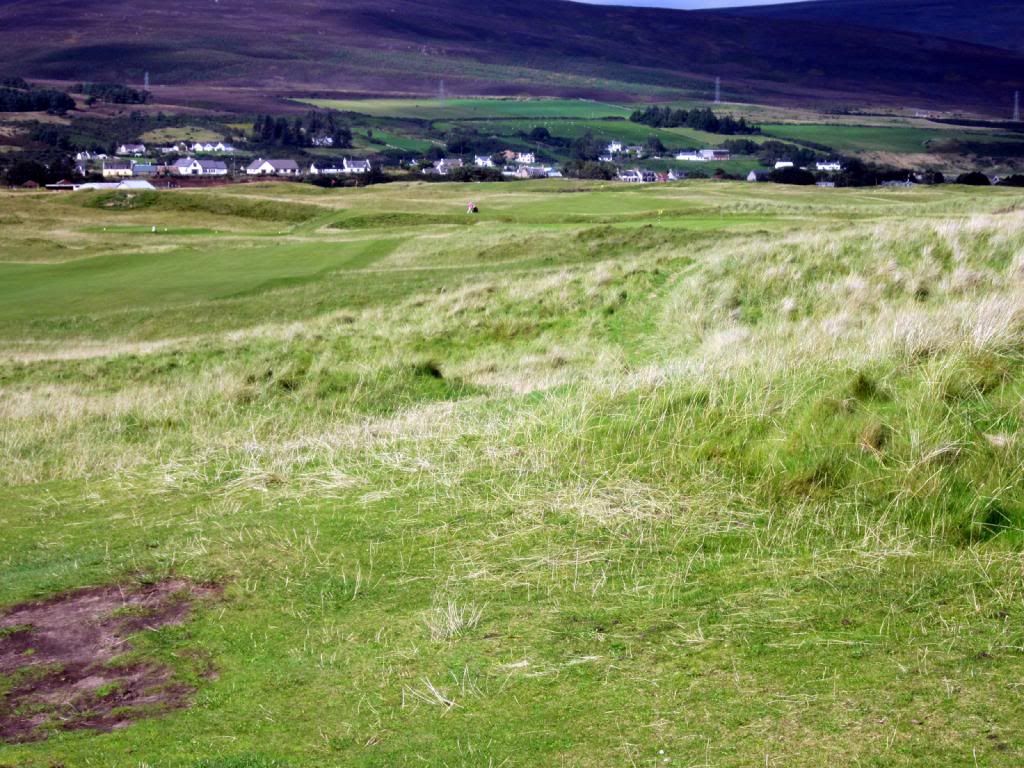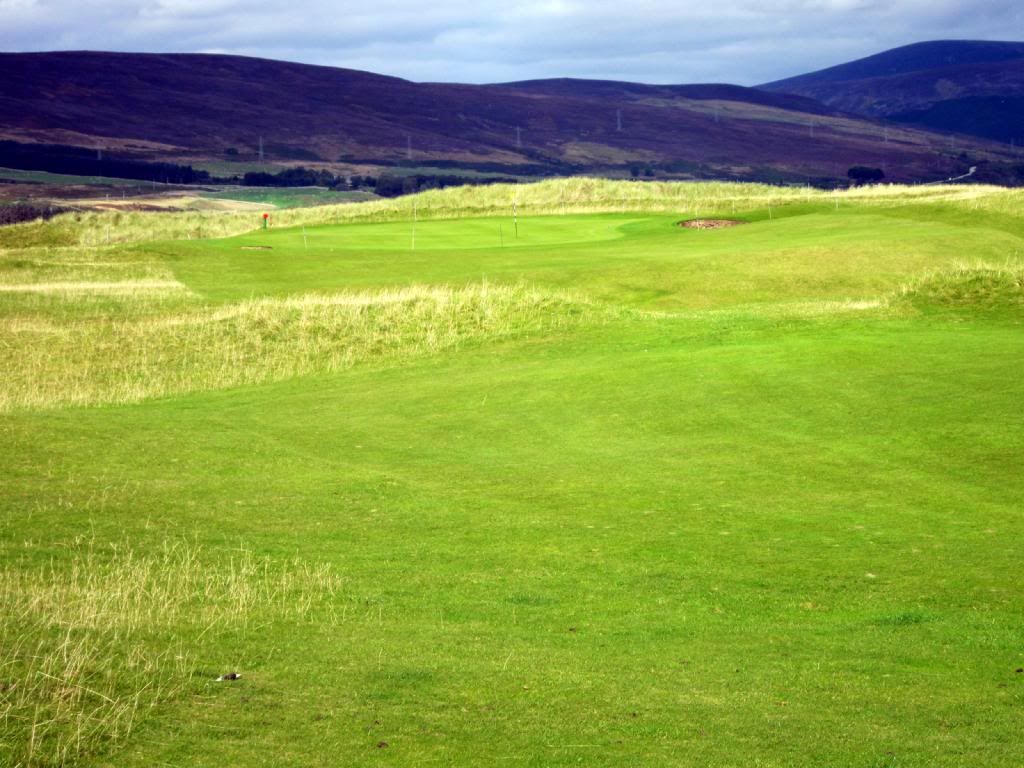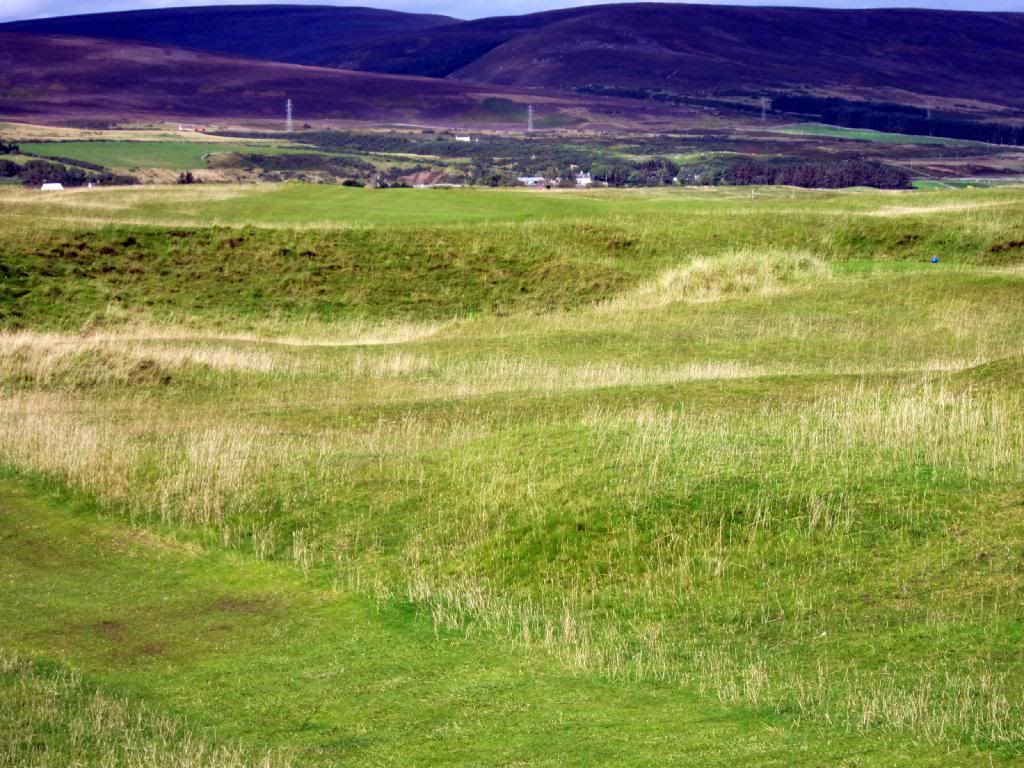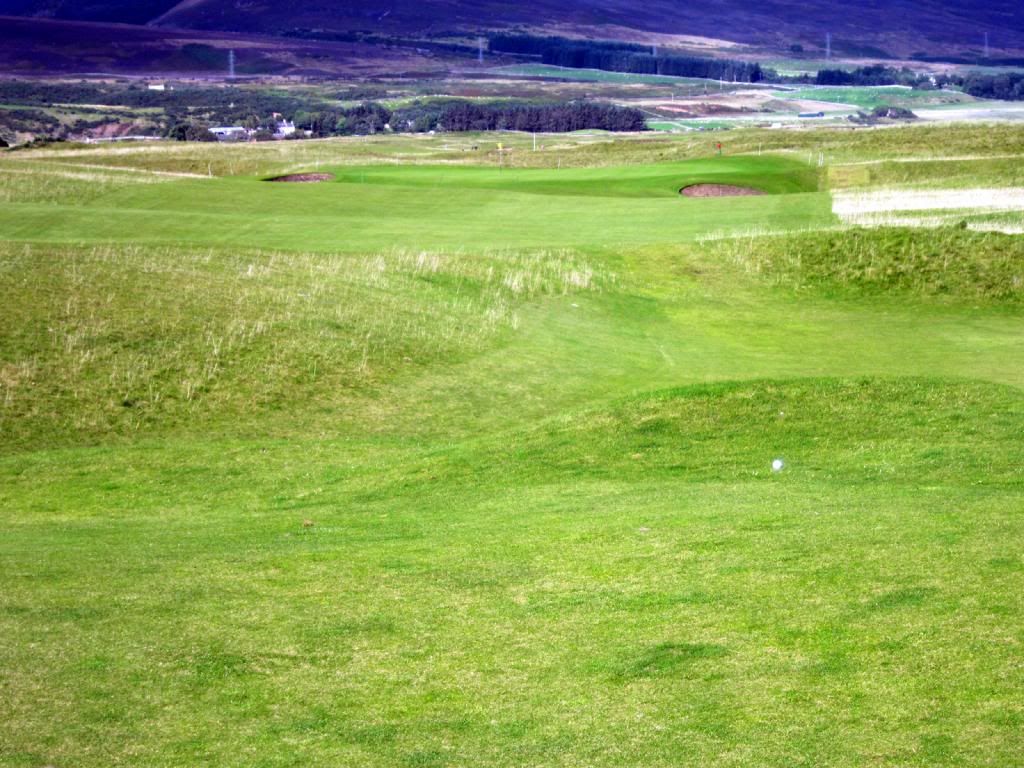Well, at least some times. I have played Brora a handful of times and inevitably I got drenched and blown away by a passing squall somewhere in the back nine including one time my umbrella was shredded in one of those squalls and I foolishly was out without rain pants. Fast forward to September 2011, after a fine match with David Tepper at Royal Dornoch, I headed up to Brora for a late afternoon round. Surprisingly, it was sort of sunny with a gentle (for Scotland) breeze, which led to a glorious 18 with nary a squall, and a great opportunity to take pictures.
What struck me this time was how good and interesting the greens were. And, for a course that may seem rustic with the electric fences and livestock is kept in very good condition. From the club website, a brief description of the course:
Gleneagles may be more glamorous, Carnoustie more prestigious. It is Brora which is the most northerly golf memorial to James Braid in his native Scotland.
Brora is also the headquarters of the James Braid Golfing Society, and while its President, Peter Thomson, and fellow member Ronan Rafferty annually enthuse, the club golfer, the bedrock of the game, will derive equal pleasure and satisfaction from Brora's 6110 yards.
Given 194 acres of Scottish links land to work on, what in 1923 was entitled "Braid's Plan" is hardly altered. Here the visitor will enjoy the mixture of bent grass and beach sand, burn water and gorse in glorious yellow May bloom. There is even a railway which comes into play from the tenth tee.
With the exception of the short sixth, the outward nine holes follow the contour of Kintradwell Bay in the foreground, with a backdrop of the Sutherland foothills from Ben Bhraggie to the west, away to the Ord of Caithness in the north-east.
The inward nine holes follow the fence line of the bordering croft land, with out of bounds to concentrate the mind. Of the two short holes, the delightful 13th, Snake, winds back towards the sea, whilst the 18th contains all the concerns of protecting a score against a bunkered green a two hundred yard carry away and under the scrutiny of the clubhouse windows.And, the scorecard.

From the first tee a view northward looking down the first fairway (snaking out to the right) and over the 18th tee and 17th green to the brooding Sutherland hills in the distance. Not exactly sunny, but promising. (Click through images may be larger than your screen)

The 1st is an inviting short par 4 dogleg right where the green beckons seductively from across the fescue covered dune rough. It is further than it looks but how can you resist going for it. But, it is the first tee. A more prudent play is to lay up down the fairway and then pitch up to the severely canted green.

The 2nd is a slight dogleg right with a hidden depression a little past 200 yards off the tee that requires some consideration.

The second shot into the green is reasonably benign although the green appears to tilt from right to left.

The 3rd is a kick in the head long par 4 after two short starting holes. The tee shot is blind and the aiming pole looks too far left of where it feels like you should aim. The hole is called Canal for a reason. Although it is a dry canal, the depression in the fairway is not much more than 200 yards off the tee requiring some decision making about whether you should attempt to carry it. If not, it is a very long second to the green.

The second from just short of the canal shows the green sitting just beyond another depression.

From closer in, the fairway short of the green appears to go left to right while the green appears level. It gets confusing.

The 4th is another short par 4 with a semi-blind tee shot. Long hitters will be thinking of driving this green if they can pick out the proper line. The white aiming post behind the green gives the hole its name.

The green sits down in a nice dell. Most will be thinking of a birdie on this hole.

From closer in, it's obvious that there's ample opportunity to run a long drive or short second shot into the green.

The 5th is a second long par 4 called Burn. Not surprisingly, there is a water filled burn snaking across the fairway, again a little more than 200 yards off the tee. The tee shot is again blind and requires a decision about carrying the burn or not.

The second shot from short of the burn. The green is built on the side slope of a dune and is protected by the shoulder of the dune. Everything slopes right to left. The left side of the fairway is best for approaching the green.

The green from the bridge over the hidden burn.

The 6th is a medium length par 3 that turns at right angles inland to the outward flow of the course.

From closer in the contouring of the green is more evident. This is a hard green to hit.

From front right, there are some interesting artifacts.
